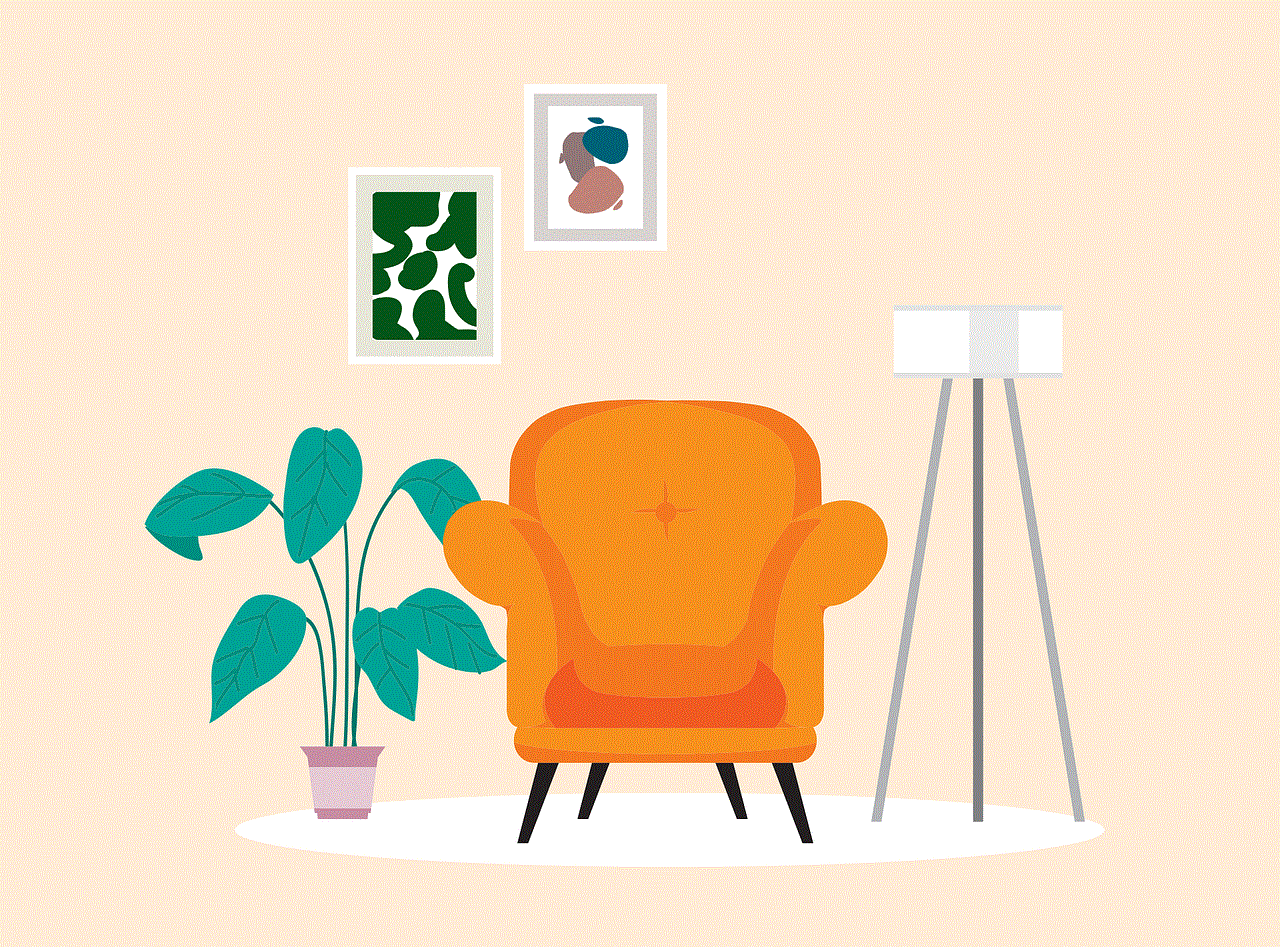iphone vpn keeps turning on
In today’s digital age, privacy and security are of utmost importance. With the rise of cyber threats and government surveillance, individuals are turning to Virtual Private Networks (VPNs) to protect their online activities. VPNs have become increasingly popular, especially among iPhone users. However, some iPhone users have reported that their VPN keeps turning on, even when they have not manually activated it. This can be a frustrating and concerning issue, leaving users wondering why this is happening and how it can be resolved. In this article, we will delve into the reasons behind the constant turning on of VPN on iPhones and provide possible solutions to fix this issue.
Before we dive into the reasons why an iPhone VPN keeps turning on, it is essential to understand what a VPN is and how it works. A VPN is a secure network connection that allows users to access the internet through an encrypted tunnel. This means that all the data transmitted between the user’s device and the VPN server is encrypted and cannot be accessed by anyone else. This provides users with a secure and private connection, making it difficult for hackers or third parties to intercept their online activities. VPNs also allow users to access geo-restricted content by masking their IP address and making it appear as if they are browsing from a different location.
Now, let’s explore some of the reasons why your iPhone VPN keeps turning on:
1. Auto-connect feature: One of the main reasons why your iPhone VPN may keep turning on is due to the auto-connect feature. This feature is available on most VPN apps and is designed to automatically connect to a VPN server when the device is connected to the internet. While this may seem like a useful feature, it can be the cause of your VPN constantly turning on. To fix this issue, you can disable the auto-connect feature in your VPN settings or choose to manually connect to the VPN whenever you need it.
2. Network connectivity issues: Another reason why your iPhone VPN may keep turning on is due to network connectivity issues. If your internet connection is unstable or keeps dropping, the VPN may keep turning on as it tries to establish a secure connection. This can be quite annoying, especially for users who have limited data plans. To fix this issue, you can try switching to a more stable internet connection or contacting your internet service provider to resolve any network issues.
3. Software updates: Software updates are essential for the smooth running of any device, including iPhones. However, sometimes these updates can cause issues with your VPN. For instance, if your VPN app is not compatible with the latest iOS update, it may cause the VPN to keep turning on. To fix this issue, you can check for any updates for your VPN app and make sure it is compatible with the latest iOS version.
4. Background app refresh: Background app refresh is a feature on iPhones that allows apps to refresh their content in the background, even when they are not in use. This can be helpful for some apps, but it can also cause issues with your VPN. If your VPN app is set to refresh in the background, it may keep turning on automatically. To fix this issue, you can disable background app refresh for your VPN app in your iPhone settings.
5. location services : Another reason why your iPhone VPN may keep turning on is due to location services. Some VPN apps use location services to determine the best server for you to connect to. However, if your location services are not accurate, it may cause the VPN to keep turning on. To fix this issue, you can try turning off location services for your VPN app or manually choose a server to connect to.
6. Battery-saving mode: iPhones have a battery-saving mode that helps to conserve battery life by disabling certain features. One of these features is the VPN. If your iPhone is in battery-saving mode, your VPN may keep turning on as it tries to reconnect. To fix this issue, you can either disable battery-saving mode or add your VPN app to the list of exceptions.
7. Issues with your VPN app: Sometimes, the issue may not be with your iPhone, but rather with your VPN app. If your VPN app is not functioning properly, it may cause the VPN to keep turning on. To fix this issue, you can try reinstalling the app or contacting the app’s customer support for assistance.
8. VPN server issues: Another possible reason why your iPhone VPN keeps turning on is due to issues with the VPN server. If the server is experiencing high traffic or technical difficulties, it may cause your VPN to keep turning on as it tries to establish a connection. To fix this issue, you can try connecting to a different server or contact your VPN provider for assistance.
9. Outdated VPN app: Just like any other app, VPN apps require regular updates to fix bugs and improve functionality. If your VPN app is outdated, it may cause issues with your VPN, such as constantly turning on. To fix this issue, you can check for any updates for your VPN app and make sure it is the latest version.
10. Malware or virus: Finally, your iPhone VPN may keep turning on due to the presence of malware or virus on your device. Malware and viruses can interfere with your device’s settings, including your VPN settings, causing it to turn on automatically. To fix this issue, you can run a scan on your device using an anti-malware or antivirus software and remove any malicious files.
In conclusion, there can be various reasons why your iPhone VPN keeps turning on, and it can be a frustrating issue to deal with. We have outlined some of the common reasons for this issue and provided possible solutions to fix it. However, if none of the solutions work, you may need to contact your VPN provider for further assistance. It is essential to ensure that your VPN is functioning correctly to protect your online activities and maintain your privacy. By understanding the reasons behind the constant turning on of your iPhone VPN, you can take the necessary steps to resolve the issue and enjoy a secure and private online experience.
13 reasons why romanticizing mental illness
Title: The Dangers of Romanticizing Mental Illness: A Critical Analysis of “13 Reasons Why”
Introduction:
In recent years, mental health has gained increased recognition and discussions surrounding it have become more prevalent. While this is undoubtedly a positive development, it is essential to examine how mental health is portrayed in popular media. One such example is the controversial Netflix series “13 Reasons Why.” This article aims to critically analyze how this show romanticizes mental illness, potentially perpetuating harmful stereotypes and misconceptions. By exploring its impact on vulnerable viewers and the broader implications for mental health discourse, we can better understand the dangers of romanticizing mental illness in the media.
Paragraph 1: Understanding Romanticization
Romanticizing mental illness refers to the portrayal of mental health issues in a way that idealizes or glamorizes them. It often overlooks the severe consequences of mental illness, trivializes the experiences of those affected, and may inadvertently encourage an unhealthy fascination with suffering or self-destructive behaviors. In the case of “13 Reasons Why,” the show’s narrative and visual representation of mental health issues can be argued to romanticize them.
Paragraph 2: The Premise of “13 Reasons Why”
“13 Reasons Why” centers around the suicide of a high school student named Hannah Baker, who leaves behind a series of cassette tapes explaining her reasons for taking her own life. While the show tackles pertinent issues such as bullying, sexual assault, and depression, its execution often blurs the line between raising awareness and romanticizing mental illness.
Paragraph 3: The Glamorization of Suicide
One of the most contentious aspects of “13 Reasons Why” is its graphic depiction of suicide. In the final episode, the main character’s suicide is shown explicitly, potentially triggering vulnerable viewers or those already struggling with mental health issues. This depiction can inadvertently romanticize suicide, creating a dangerous precedent for impressionable audiences.
Paragraph 4: The Contagion Effect
Studies have shown that exposure to suicide or self-harm in media can contribute to a contagion effect, whereby vulnerable individuals may be more likely to engage in similar behaviors. By presenting suicide as an act of revenge and offering detailed explanations for the protagonist’s decision, “13 Reasons Why” risks normalizing and even inspiring copycat behavior.
Paragraph 5: Misrepresentation of Mental Health Professionals
Another aspect of the show that contributes to the romanticization of mental illness is the portrayal of mental health professionals. In “13 Reasons Why,” the school counselor’s response to Hannah’s cry for help is portrayed as dismissive and ineffective. This misrepresentation undermines the importance of seeking professional help and perpetuates the idea that mental health professionals are unhelpful or incapable.
Paragraph 6: The “Tragic Hero” Narrative
The show employs a “tragic hero” narrative with Hannah as the central character, building her up as a complex and mysterious figure. This approach may unintentionally romanticize mental illness by portraying it as a defining characteristic or a source of intrigue. By glamourizing Hannah’s struggles, the show fails to address the importance of proper treatment, support, and recovery.



Paragraph 7: The Glorification of Revenge
“13 Reasons Why” also romanticizes the idea of posthumous revenge. Hannah’s tapes serve as a form of retribution against those she perceives as having wronged her, reinforcing the notion that harming oneself can inflict pain on others. This message is problematic as it disregards the complexity of mental health issues and the need for empathy and understanding.
Paragraph 8: The Responsibility of Media
Media has a significant influence on societal attitudes and perceptions. By romanticizing mental illness, “13 Reasons Why” may inadvertently perpetuate harmful stereotypes and misconceptions. It is crucial for media creators to balance storytelling with responsible portrayals of mental health, ensuring the portrayal does not inadvertently glamorize or trivialize the suffering experienced by those with mental health issues.
Paragraph 9: The Importance of Trigger Warnings and Resources
Given the potentially distressing content in “13 Reasons Why,” it is essential for media platforms to include trigger warnings and provide resources for viewers seeking support. These measures can help individuals make informed choices about their mental health and access appropriate resources if necessary.
Paragraph 10: Shifting the Narrative
While “13 Reasons Why” has received criticism for its portrayal of mental health, it has also sparked important conversations surrounding bullying, sexual assault, and teen suicide. By shifting the narrative away from romanticization and instead focusing on responsible storytelling, future media productions can contribute to destigmatizing mental illness and promoting empathy, understanding, and support.
Conclusion:
The romanticization of mental illness, as seen in “13 Reasons Why,” can have detrimental effects on vulnerable viewers and perpetuate harmful stereotypes. It is crucial for media creators to approach mental health topics with sensitivity, avoiding glamorization and instead fostering understanding and empathy. By doing so, we can contribute to a more informed and compassionate society that supports those affected by mental health issues.
one control connect anywhere
Title: One Control Connect Anywhere: Revolutionizing Remote Control Technology
Introduction:
In today’s fast-paced world, technology has become an integral part of our lives. From smartphones to smart homes, we rely heavily on remote control systems to simplify and enhance our daily tasks. The phrase “one control connect anywhere” encapsulates the advancements made in remote control technology, allowing users to seamlessly operate multiple devices from a centralized hub, regardless of their location. In this article, we will explore the concept of “one control connect anywhere” in detail, examining its significance, applications, benefits, and potential future developments.
1. Understanding “One Control Connect Anywhere”:
“One control connect anywhere” refers to a remote control system that enables users to access and operate various devices from a single interface, regardless of their physical location. This concept utilizes Internet of Things (IoT) technology, connecting devices through a network, and leveraging the power of cloud computing. The central hub acts as a mediator, allowing users to control multiple devices remotely, including appliances, security systems, lighting, entertainment systems, and more.
2. Significance of “One Control Connect Anywhere”:



The significance of “one control connect anywhere” lies in its ability to simplify and streamline our daily lives. It eliminates the need for separate remote controls for each device, providing a hassle-free experience. Moreover, it enables users to monitor and manage their devices remotely, granting them greater control and convenience. This technology has immense potential in various fields, including home automation, healthcare, industrial automation, and more.
3. Applications of “One Control Connect Anywhere”:
a. Home Automation: “One control connect anywhere” is revolutionizing the way we interact with our homes. With a centralized control system, homeowners can remotely manage their lighting, HVAC systems, security cameras, and even appliances. This technology enhances energy efficiency, security, and comfort, making our homes smarter and more sustainable.
b. Healthcare: In the healthcare sector, “one control connect anywhere” has the potential to improve patient care and enhance the efficiency of medical facilities. Doctors can remotely monitor patients’ vital signs, adjust medical devices, and even perform remote surgeries. This technology enables healthcare providers to deliver quality care regardless of geographical barriers.
c. Industrial Automation: Industries can now optimize their operations using “one control connect anywhere.” Manufacturers can remotely monitor production lines, adjust parameters, and troubleshoot issues without being physically present on the factory floor. This technology enhances productivity, reduces downtime, and improves overall operational efficiency.
4. Benefits of “One Control Connect Anywhere”:
a. Convenience: The primary benefit of “one control connect anywhere” is the convenience it offers. With a centralized control system, users can operate multiple devices with a single interface, eliminating the need for multiple remote controls or apps.
b. Energy Efficiency: By remotely managing devices such as lighting and HVAC systems, users can optimize energy consumption. This technology allows users to turn off lights, adjust thermostats, and control appliances, thus reducing energy waste and lowering utility bills.
c. Enhanced Security: With “one control connect anywhere,” users can monitor and control security systems, including cameras, alarms, and access control systems. This technology provides peace of mind, allowing users to keep an eye on their premises from anywhere in the world.
d. Cost Savings: Centralized control systems can lead to significant cost savings by optimizing energy consumption, reducing maintenance costs, and enhancing operational efficiency. By remotely managing multiple devices, users can save time and resources.
5. Future Developments and Challenges:
The concept of “one control connect anywhere” is still evolving, and we can expect exciting developments in the near future. Integration with artificial intelligence and voice recognition technology will enhance user experience and make control systems more intuitive. However, challenges such as data security, interoperability between different devices and platforms, and user privacy will need to be addressed to ensure the widespread adoption of this technology.
Conclusion:



“One control connect anywhere” is transforming the way we interact with our devices and control our surroundings. This technology offers immense convenience, energy efficiency, enhanced security, and cost savings. With applications in home automation, healthcare, and industrial automation, “one control connect anywhere” has the potential to revolutionize various industries. As we move forward, advancements in this field will undoubtedly bring us closer to a seamlessly connected world where remote control is effortless, efficient, and accessible from anywhere.
